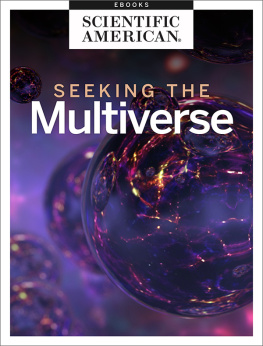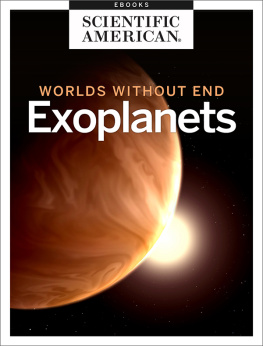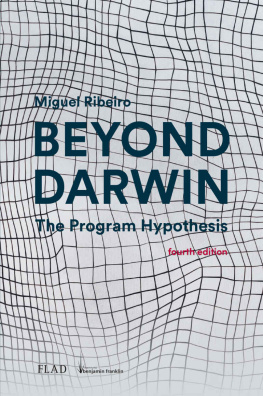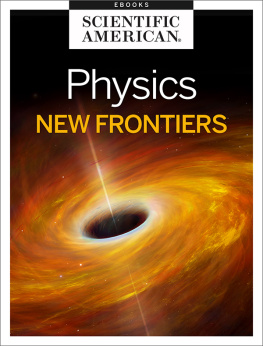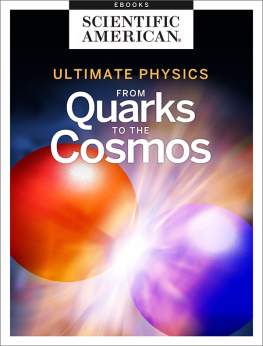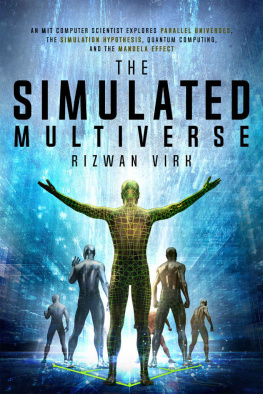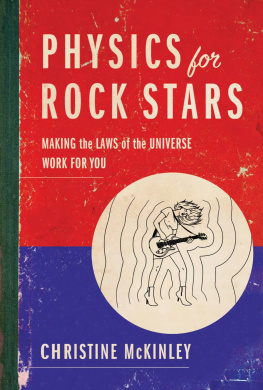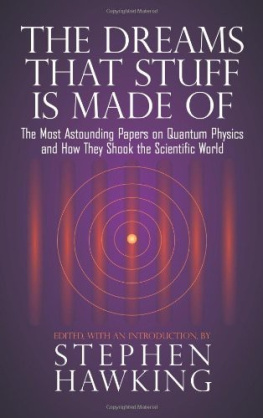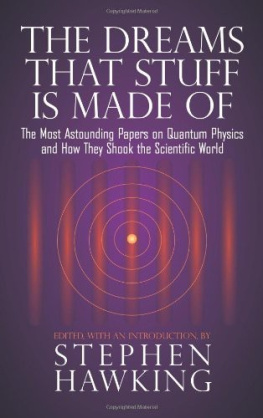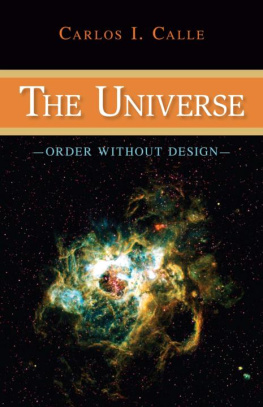SEEKING THE MULTIVERSE
From the Editors of Scientific American
Cover Image: MARK GARLICK/SCIENCE PHOTO LIBRARY
Letters to the Editor
Scientific American
One New York Plaza
Suite 4500
New York, NY 10004-1562
or editors@sciam.com
Copyright 2017 Scientific American, a division of Nature America, Inc.
Scientific American is a registered trademark of Nature America, Inc.
All rights reserved.
Published by Scientific American
www.scientificamerican.com
ISBN: 978-1-466842519


SEEKING THE MULTIVERSE
From the Editors of Scientific American
Table of Contents
Introduction
by Jesse Emspak
Section 1
1.1
by Max Tegmark
1.2
by George F. R. Ellis
1.3
by Cliff Burgess and Fernando Quevedo
Section 2
2.1
by George Musser
2.2
by Georgi Divali
Section 3
3.1
by Alejandro Jenkins and Gilad Perez
3.2
by Steven Carlip
3.3
by Nima Arkani-Hamed, Savas Dimopolous and Georgi Divali
Section 4
4.1
by David Deutsch and Michael Lockwood
4.2
by Gabriele Veneziano
4.3
by George Musser
Section 5
5.1
by Raphael Bousso and Joseph Polchinski
5.2
by John D. Barrow and John K. Webb
5.3
by Paul J. Steinhardt
Introduction: What If? Why Us? Why Now?
Parallel universes are a staple of science fiction, and it's no wonder. They allow us to explore the question, "what if?" in a way that letsus step completely outside of the world we know, rather than question how that world might have turned out differently. For cosmologists thequestion isn't "what if the South won the Civil War?" but "what if the constants that make up the fundamental building blocks of physics weredifferent?"
For example, the fine structure constant, known as alpha (), is the square of the charge on an electron (e), divided by twice the permittivityof a vacuum (0) multiplied by Planck's constant ( h ) and the speed of light (c): = e2/20 h c. The number is about 1/137. Reduce it by a fewpercent and nuclear reactions in stars wouldn't produce carbon. Increase it to 0.1 and stellar fusion couldn't happen at all.
Another finely tuned number is the strength of gravitytoo strong and stars would burn through their fuel far more quickly. If the universeexpands too fast, matter would spread out too thin for galaxies to form. Why are there four fundamental forces: gravity, electromagnetism,with a strong and weak nuclear force? Why not three?
It's easy to argue that the numbers have to be where they are for us to be here to observe them. But that still begs the question of why thathappens in the first place. The answer might be that our universe isn't the only one. That's the idea explored inthis eBook, Possibilities in Parallel: Seeking the Multiverse . In Section 1, we explore why scientists think other universes could exist.After that, we get a look at the implications.
Is it possible to have life in a universe with different physical laws? It would seem so. In Cracking Open a Window, George Musserdiscusses the possibility that our universe has more than three spatial dimensionsthe others just happen to be very small. Otherarticles, including The Universes Unseen Dimensions, analyze the idea that our universe is one of many "branes"three-dimensional structures stretched out over a higher-dimensional space. Our own universe might well be the result of a collision between two branes.
The concept of a parallel universe also touches time travel. So we take a brief jaunt into treatments of quantum theory that allow for itand make parallel universes necessaryincluding David Deutschs and Michael Lockwoods The Quantum Physics of Time Travel. Then there's the question of what the term "parallel universe" actually means. It might be a different region of one universe, in principle reachable if one travels far enough, or another region where a big bang took place, a bubble like our own that we can never reach.
It's a triumph of the sciences that the very question of why the universe looks as it does can be asked at all. As late as 1920 it was still possible to argueas American astronomer Harlow Shapley didthat the Milky Way galaxy was the whole of the universe. Widespread acceptance of the Big Bang theory didn't come until the discovery of the cosmic microwave background in 1964. There are currently severalpossibilities for a multiverse, if it exists. Time and a lot of scientific spadework will reveal which one is rightand get us closerto answering what were once metaphysical questions: what if, why us, why now?
-Jesse Emspak
Book Editor
SECTION 1
Undiscovered Worlds
Parallel Universes
by Max Tegmark
Is there a copy of you reading this article? A person who is not you but who lives ona planet called Earth, with misty mountains, fertile fields andsprawling cities, in a solar system with eight other planets? Thelife of this person has been identical to yours in every respect.But perhaps he or she now decides to put down this article withoutfinishing it, while you read on.
The idea of such an alter ego seems strange and implausible,but it looks as if we will just have to live with it, because itis supported by astronomical observations. The simplest andmost popular cosmological model today predicts that you havea twin in a galaxy about 10 to the 1028 meters from here. Thisdistance is so large that it is beyond astronomical, but that doesnot make your doppelgnger any less real. The estimate is derivedfrom elementary probability and does not even assumespeculative modern physics, merely that space is infinite (or atleast sufficiently large) in size and almost uniformly filled withmatter, as observations indicate. In infinite space, even the mostunlikely events must take place somewhere. There are infinitelymany other inhabited planets, including not just one but infinitelymany that have people with the same appearance, nameand memories as you, who play out every possible permutationof your life choices.
You will probably never see your other selves. The farthestyou can observe is the distance that light has been able to travelduring the 14 billion years since the big bang expansion began.The most distant visible objects are now about 4 1026meters awaya distance that defines our observable universe,also called our Hubble volume, our horizon volume or simplyour universe. Likewise, the universes of your other selves arespheres of the same size centered on their planets. They are themost straightforward example of parallel universes. Each universeis merely a small part of a larger multiverse.
By this very definition of universe, one might expect thenotion of a multiverse to be forever in the domain of metaphysics.Yet the borderline between physics and metaphysics isdefined by whether a theory is experimentally testable, not bywhether it is weird or involves unobservable entities. The frontiersof physics have gradually expanded to incorporate evermore abstract (and once metaphysical) concepts such as a roundEarth, invisible electromagnetic fields, time slowdown at highspeeds, quantum superpositions, curved space, and black holes.Over the past several years the concept of a multiverse has joinedthis list. It is grounded in well-tested theories such as relativityand quantum mechanics, and it fulfills both of the basic criteriaof an empirical science: it makes predictions, and it can be falsified.Scientists have discussed as many as four distinct typesof parallel universes. The key question is not whether the multiverseexists but rather how many levels it has.

